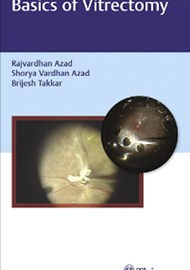This is a book set out over 14 chapters which is designed to be a handbook for beginners embarking on a career in vitreoretinal (VR) surgery or for trainee surgeons on rotation with the VR team. It starts with an overview of the history of VR and the developments in instrumentation over the years before embarking on specific practical advice such as case selection and how to do a pars plana vitrectomy. It then has a chapter dedicated to each indication for VR surgery such as giant retinal tear and retained intraocular foreign body.
Each section of the book is broken down into preoperative assessment, surgery, complications and prognosis and then finishes with a helpful ‘tips’ list. There are plenty of colour images in each section which help the reader visualise the techniques, as well as breaking up the text to make for easier reading. The chapters are quite concise and can be read very quickly, making it a good point of reference in a clinical scenario or in preparation for an operating list.
Given that the book is now five-years-old, some of the information is a little outdated, such as not mentioning smaller 27 gauge systems now widely in use and modern techniques for tackling large macular holes such as internal limiting membrane (ILM) flaps which are not discussed in any detail. However, this manual is aimed at the beginner and therefore I don’t think this really matters as its attention to the basics is excellent. I would highly recommend reading this book if you have an interest in VR surgery and want to get to grips with the basic surgical principles, pick up some helpful practical tips and be more aware of complications to look out for along the way.





